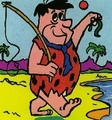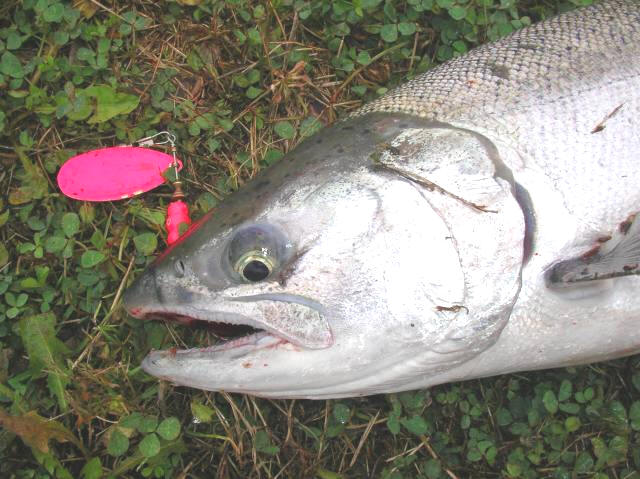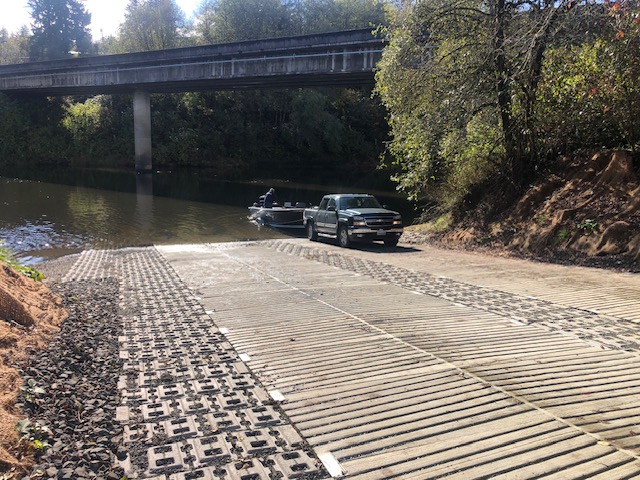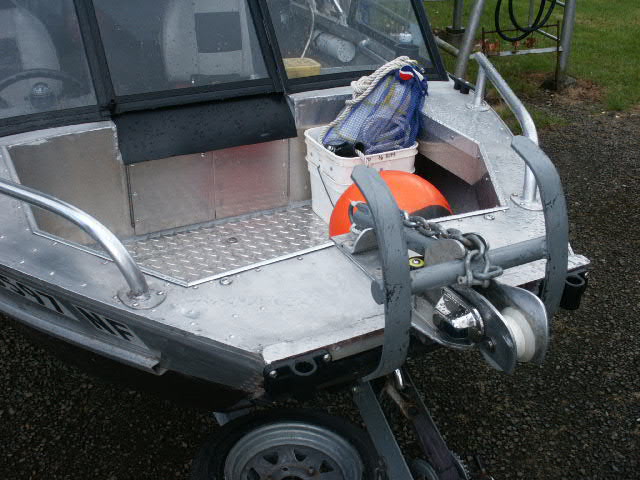 |
Chehalis
River Salmon Fishing in
|
 |
The WDFW usually opens the Chehalis River for salmon fishing above the Hiway 101 bridge in Aberdeen up to the Porter bridge October 1 this marine area is (317). The marine area code for punching your salmon punch card from the Porter Bridge to Black River is also (317) above there to the high bridge at PeEll is code (315) but these areas will be covered under a separate article.
For the purposes of this article we will go from the Montesano launch, up to the Porter Bridge.
The concentration of fishing here is usually is from the Montesano launch upstream to above the mouth of the Satsop about 2 miles or so. Most fishing above this Satsop section will be bank fishing, as the river is low enough that most boats, even jets do not like to navigate this skinny water. However at Porter, the river deepens enough that there is a launch just upstream from the Porter bridge.
Tidewater influence under normal conditions, is usually about a mile or so above the mouth of the Satsop River. The launch just above this is at the Fuller Bridge.
This fishery will cover three seasons. The first will be for Chinook salmon in the spring of the year IF the there is enough returning wild spawners to allow a season to happen.
The second more heavily fished time will normally be for fall Coho, because the bulk of the fall Chinook will have already passed upriver. However there is a chance you may catch a straggler fall Chinook if the Chinook retention is in effect. These Chinook are usually pretty dark fish. An occasional Chum may also be encountered, and being fresh out of saltwater they can (but not always) be bright fish.
The third is a late fall Coho run that starts about December 10th. These fish will be "biters" and tend to move into the system more like steelhead. That is that they trickle in until late February. They are mostly hatchery origin fish and are heading to the Satsop, Skookumchuck, Newaukum, upper Chehalis River and it's tributaries.
Listed below is information on the lower Chehalis River, however the same could be applied to many other rivers.
It will usually be centered around the waters from above Montesano to Elma. There are 2 launches in this area, with the Porter launch farther upriver.
(1) South Montesano (WDFW) - Chehalis River
From Montesano exit, South on SR 107 .8 mi; Left at
"Public Fishing" sign, go past the lumber mill .2 mi to end
of Rd. The road looks like it
goes into the mill parking lot, but it goes right thru it and on to the
launch. Double
lane concrete ramp, lots of gravel
parking, but the ramps can be a problem at low tide. Rest rooms.
(2)
Fuller bridge boat ramp (WDFW) - Chehalis River.
From Elma, W on US 12, 4 mi; S on Keyes Rd 1.5 mi; just
before Chehalis River bridge turn R on paved Rd.
Launch site is just upstream from the bridge.
Double lane concrete
ramp on the upstream side of the bridge,
lots of ravel parking. Rest rooms.
| Fuller bridge launch |
 |
(3) Porter bridge boat ramp appears to be a WDFW unit.
It is located just west of the river bridge and the first road to
the left that goes into a large gravel parking
lot. The single lane concrete launch is located in a slight back-eddy for
protection. There are restroom facilities here.
| Porter bridge launch |
 |
When ; This fishery usually takes place right after the first fall rains. Best fishing occurs if we get about 1/2" of rain 2 to 3 days apart. This triggers the fish to move upriver, but not a heavy flow of water to push the river out of shape. If we get about 2" of rain over a couple of days the lower river may raise 4' or so, making it about impossible to fish as all the dead grass, leaves, stick and logs come floating down all at once.
The fish tend to stack in the tidewater of the lower river starting about the first of September. Many of them seem to refuse to bite at times. Fishing for them is discussed in the article "Chehalis River Salmon , lower 1". The best for the fishermen is, if we get rain in moderation over an extended period of time beginning the later part of October. Normally the river needs to raise about 1 to 2 feet from the normal fall low to trigger the fish to move upstream. The first fish to move upstream in mass will usually be dark due to their extended stay in tidewater. But after this first wave passes upriver, the next fish tend to be considerably brighter. Some still have sea lice on them, which indicates they are not too far from saltwater. This can be attributed to the fact that you are only 20 miles or so from saltwater.
Stream flow info can be gotten off the internet USGS address of http://wwwdwatcm.wr.usgs.gov/rt-cgi/gen_tbl_pg Stream flow needs to be around 5000 CFPM in the Chehalis at Satsop, if you intend to use KwikFish. The stream height that works good is between 6' & 7' at the mouth of the satsop. Much above that flow, you are simply fighting to stay anchored and the current is getting swift with the water murky. If the water levels out and flow are less than the above, then it is best to use spoons / spinners and anchor in the tail-outs. It also seems that there are more fish moving on a rising river as compared to a dropping water.
If we get lots of steady rain, then the fish shoot straight up the river in the high water. And the water being muddier, makes it harder to effectively fish . The fish seem to move in large numbers then and are more interested in getting upriver to spawn with the heavy runoff, than with moderate river levels.
The fish tend to run in small schools, so if your neighbor catches one, you may be next.
There are more than a couple of methods used here. It seems that these late pre-spawning fish normally do not hit the lure with the intent to eat it. They however hit it if you put it in front of them, they get mad at it and hit the lure more out of frustration or a territorial instinct. This may mean that they travel in certain migratory paths that are easier fro them to swim in on that particular day. This path may change as the water flow also changes. I have seen a hogline of 7 boats and the only boat really catching fish consistently which was the one that was anchored next to the west shore. The others were pulling an occasional fish, but this one boat was consistently pulling fish, until they limited. Then the next boat slid over into the hot spot, and limited. And so, on until everyone got their fish and went home.
When these conditions exist,
plan an emergency few days off ASAP. Get your boat, gear, ice chest and head for the
river, as fish wait for no one. You have to be there when the fish are there.
The tide does not necessarily effect your time on the water, other than the fish
tend to move upriver on the outgoing tide. Also if you are to get
your favorite spot, it may behoove you to get there before daylight, as the
dedicated retired fishermen show at this time.
Anchoring with Kwikfish ; The bulk of the fishermen on the river will usually be spoon / spinner fishermen, as they can fish about anywhere and without much special knowledge of the river or how to read the water. The fisherperson who is flexible and can read the water and can fish KwikFish when applicable will catch more fish.
This method
will normally be to use a boat and at a faster river flow than when using
spoons.
Either
a jet sled or a drift boat can be used effectively. Actually even a prop boat can fish much of this section of the
river. Anchor in a selected spot and use Kwikfish. This lure is a brand name of a large type
Flatfish made by Luhr Jensen.
The
normally used sizes are K14 / K15 / or K16.
These are large, a K14 being 4 ¼” & a K15 is 5”, or
Flatfish in sizes M2 to T60.
Plugs work best when they are wiggling rhythmically. If the plug is shaking wildly, it will spook the fish. To avoid overactive plugs, go to a smaller size. The size used is dependent on the current. These lures have to have considerable water to operate properly. If in doubt, start with a K15. Faster water dictates the smaller K14, while slower water will require a K16. One color to be sure you have in your tackle box is the "Seahawk".
It seems that in slower water you need the larger shovel nose to get enough action on the lure. The color used will usually be dictated by the color of the water. If the water is rather clear, then the lure can be a chrome/blue or chrome/green. Darker water dictates a brighter color lure like a chrome/red, chrome/yellow, or chrome with chartreuse, green, or orange accents. Some fishermen may use a bright fire red color.
Kwikfish With a Sardine Wrap ;
The
Kwikfish with a sardine wrap is one of the favorite lures for salmon.
Some guides say that you will more than double your catch by adding a small sardine wrap to the body of the plug. The fillet needs to be centered on the body of the plug to insure that the plug will still work right. The fillet is placed with the skin side toward the lure. Secure the fillet with elastic sewing thread. Replace the fillet after about an hour in the water as most of the smell has washed off. Sardines are used as they tend to be oilier than other baitfish readily available.
These lures will come usually with (2) triple hooks attached. Some river regulations may require them to be replaced with (2) single Siwash hooks. It has been found that you may loose more fish on the single hooked lure. If you however use the triple hooked lure, when you net the fish, be very careful that you do it right the first time. Otherwise a badly scared fish may be on the outside of your net and the lure attached to the net bag.
The True Secret Here is Location ; For Kwikfish, you will have to learn to read the river. Think like a salmon. What section will be the easiest to swim upstream in? If you ever have a chance, go to a smaller river during spawning time and just watch the upstream migrating fish, note their travel lanes. I have seen Coho swim in the grass within 6" of shore if it was the easy and straight way upstream. These lanes may even change from day to day if the water level fluctuates.
They do not necessarily swim in the deepest spot either. They normally swim in the seam between the fast water and the bank or slower shallower water. Each spot will probably be somewhat different, but where they travel will always be the easiest for them. Where one goes so goes the most of them.
Look for an island, riffle, large rocks, etc. all of which diverts the water in one way or the other. Now your idea is to plan your attack area. Do not just anchor in a tail-out and hope for the best. Sure you may catch some fish, but you may be able to do better with your time. Also do not think that since all the other boats are fishing one area that it is the only place to fish. Many of these fishermen may well be amateurs and are just following the crowd. You want to be in a slot that these fish will be coming thru, so if you can narrow down a 100 foot river into a 10 foot slot, your chances improve greatly. They do not like to cross a shallow fast riffle if at all possible. If one side of it is just a little deeper, and slightly slower, they normally will come thru there. Each location will be slightly different. They may come thru slower water along the edge of a pool that has fast deeper water on the other side, and then go over a riffle in about ¼ of the width where the riffle is deep enough for them and yet not as fast as the other deep fast side.
Anchoring ; The picture below is that of a jet sled that is set up for anchoring for this type of fishing. Here the rocker type anchor is used with about 8' of chain and 100' of 3/8" rope. There is a anchor retriever slider attached to the float ball. The balance of the rope that is not let out during the anchoring process is stuffed inside a nylon laundry bag with a boat fender. This bag then snapped into a loop tied in the rope beyond what is used when anchored.
Many times you could be anchored on the tail out just above a riffle. If you happen to hook into a large fish and need more room to fight it, you can again detach the anchor rope, throw it and your float over the side. Drift back to a calmer water, fight the fish, when it is in the boat, then motor back upstream, pick up the floating bag, re-attach to the bow and start over again in your old location.
One thing here is you may want to place a 3' or 4' section of 3/8" rope on the upper end of your float and attach a small foam doughnut that is used on some crab pot floats to the end. This gives you 3 or 4' of floating line between the floats to hook onto with your boat hook when moving back up and re-anchoring, as any line below the float will be under water at your anchor line angle. Also it is rather hard to grab and hold onto a wet, partially submerged float.
60 to 75 feet of anchor rope usually will be plenty in locations like this. You should also consider having the anchor rope that is NOT permanently fastened to the boat, so that it can be detached from the boat in a hurry if need be. Most boats set up for use in rivers like this will have a bow anchor roller system with a quick release rope chock. The anchor rope usually will have a float of some kind attached to the terminal end of the rope or on a anchor retrieval system on the float. The reason here is that if a log or other debris may come down and get hung up on your anchor rope or bow, that you can quickly get the boat loose before you get swamped.
| Jet-sled anchoring system |
 |
Water depth in a slot can vary depending on the river of course, but anywhere from 3-4 feet up to 9-10 feet have proven effective. Some fishermen add 5' to 8' of heavy chain between the anchor and rope to increase holding effectiveness.
Gear ; Most any standard salmon rods will work here as the rod is in the rod holder and length of line out may be anywhere from 10’ to 40’. Reels need not be big, since if you hook a large fish and it wants to go back downstream, you can chase it with the boat if need be. The reel’s drag should be in good working condition however. Line is always a topic for discussion, but any that you normally would use in ocean fishing should suffice. 25# monofilament seems to work quite well however
Cut off about 5’ of your mainline for use later as a leader to the KwikFish. Use a sinker slider on the mainline. Tie the mainline to a black swivel of 50# to 75# range. Tie one end of the cut off mainline into the other end of this swivel, and the other end into the snap that comes on the lure so that you have about 48” of leader from the swivel to the snap.
Use a lighter leader 8-10#, about 10”-12” long , as a dropper to another CHEAP swivel snap. In this snap attach a cannonball sinker in weights from 1 ounce to 2 ounce, or maybe even 3 ounces depending on the water.
Attach the lure to the terminal snap and put the gear over the side to see if it swims straight. If it goes to one side or the other bring it back and with pliers slightly twist the eye in the lure the opposite way the lure wanted to run. Put it back in, try again. If all is well, let out your line to the approximate location and set the rod in a rod holder. Now watch the rod tip, if it is not moving, you have let out too much line and the sinker is setting on the bottom. Wind in a reel handle crank, let it set, while watching. You want to reel in just enough so that the rod tip starts throbbing as the lure is wobbling.
Depending on the time of the year, you may have to pull it in occasionally to remove leaves, weeds, etc. off the sinker or lure. Many times if the lure has weeds on it, it will come to the top of the water because it is not ”working”.
Usually when these fish hit, they set the hook themselves. They hit these lures, not because they are hungry, but because the lure is in front of them and they want to continue their upriver journey. The main targeted salmon will be Chinook in the spring of the year. Chinook and Coho will be the sought after specie in the fall. However the fall Chum will hit them also.
The Use of Spoons or Spinners ; When the flow is lower, the fish tend to go over the riffles in any location since the whole river's current is less. This then allows the anchored tail-out fishermen a chance to fish the whole width of the river. Spoons and spinners can also be used in this area since you need slower water to make them function properly. Most fishermen using spoons will anchor up in the tail-out above the riffle.
Line in the 15# range seems to work best here, since the drag on heavier line will raise the lure and you need lots of weight to keep them down in the strike zone. In this situation it is not only the water conditions you have to contend with, but there will also be more than a couple of other boats fishing here at the same riffle. Many who use spoons will anchor and fish the tail-outs, here you will have to match their gear to be competitive.
Others using spoons simply drift and cast into the likely looking water along the shore. The FST spoons seem to be one favorite, Canadian Wonders would be another. One favorite color of FST's is red/silver or a rainbow color. One trick is that if you want the spoon to wobble slower, replace the Siwash hook with a larger, heavier hook.
For spinners again use a dropper to the sinker if anchored. You also may want to use a snap swivel to attach the spinner to, to cut down on line kinking if you don't retrieve often enough to remove floating debris.
Spinners such as the Blue Fox or Mepps in sizes #3 to #6 seem to be some used, with #4 the norm. For casting you should retrieve SLOW, it has been observed that most fishermen retrieve way too fast. On spinners you may consider using smelly jelly on the back side of the blade. Colors for spinners will tend to follow the same colors as the Kwikfish, or the newer rainbow colors.
The use of sinkers depends on the method of fishing. If you are casting and need more weight, then add a sliding egg sinker to the mainline above the lure. If you however are anchored fishing a tail-out, you might want to try the same sinker slider but with a dropper weight in from 1 to 3 oz. about 3' to 4' above the lure, as when using the Kwikfish.
Another lure would be the Wriggle Wart plug, fished the same a spinners or spoons.
Late Coho Fishing ; Here are 2 separate runs of fish. The early run comes in during October, but they do not appear to be a biting fish. The late run comes in about the 1st of December and lasts up into February. They are the biting fish. To fish for them, you can anchor as described above. But there is another method. This is to use a boat and come into the edge of a backwater or slough, cast a plug or spinner into the slack water. These fish tend to run up the river, then slide into dead water to rest. They mill around there before making another run up the faster water. For a link to this type of fishing CLICK HERE.
Bank Fishing ; The bankies may work a combination of lures. Some will cast the same spinners and or spoons or p[lugs that the boat fishermen use. While others may be found plunking a large pink spin-n-glow with a gob of eggs attached on a 36" leader, above a 8 to 10" dropper to the lead sinker.
Be Courteous
; If
using a sled, be mindful of the other guy. If he is bank fishing or anchored
and casting
into a hole, don't run right through his hole. If you come to this type of
fisherman, cut your power as you go by, unless he is way to one side of the
river and your passage will not disturb him. As you pass slowly, you may
even learn how he is doing, where he was fishing previously and what he is using.
Copyright ©
2003 - 2025 LeeRoy Wisner All Rights Reserved
Back to the Main
Ramblings Page
Originally written 11-25-03
Last Updated 02-20-2025 *
Contact the author
